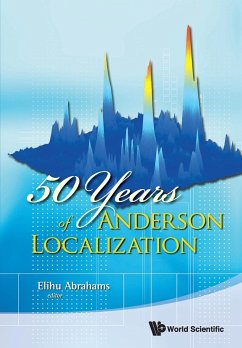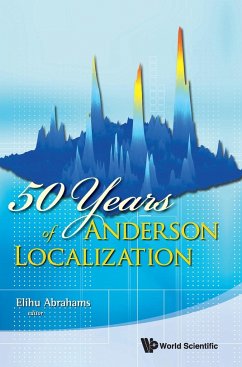In his groundbreaking paper "Absence of diffusion in certain random lattices (1958)," Philip W. Anderson originated, described and developed the physical principles underlying the phenomenon of the localization of quantum objects due to disorder. Anderson's 1977 Nobel Prize citation featured that paper, which was fundamental for many subsequent developments in condensed matter theory and technical applications. After more than a half century, the subject continues to be of fundamental importance. In particular, in the last 25 years, the phenomenon of localization has proved to be crucial for the understanding of the Quantum Hall Effect, mesoscopic fluctuations in small conductors, some aspects of quantum chaotic behavior, and most recently the localization and collective modes of electromagnetic and matter waves. This unique and invaluable volume celebrates the five decades of the impact of Anderson Localization on modern physics. In addition to the historical perspective on its origin, the volume provides a comprehensive description of the experimental and theoretical aspects of Anderson localization, together with its application in various areas, which include disordered metals and the metal-insulator transition, mesoscopic physics, classical systems and light, strongly-correlated systems, and mathematical models. The volume is edited by E Abrahams, who, as a major contributor in the field of localization, has published several papers on the celebrated scaling theory of localization. A distinguished group of experts, each of whom has left his mark on the developments of this fascinating theory, contribute their personal insights in this volume. They are: P W Anderson (Nobel Laureate, 1977), G Bergmann (University of Southern California), M Bttiker (University of Geneva), J Cardy (Oxford University), S Chakravarty (University of California, Los Angeles), V Dobrosavljevic (Florida State University), R C Dynes (University of California, San Diego), K B Efetov (Ru








